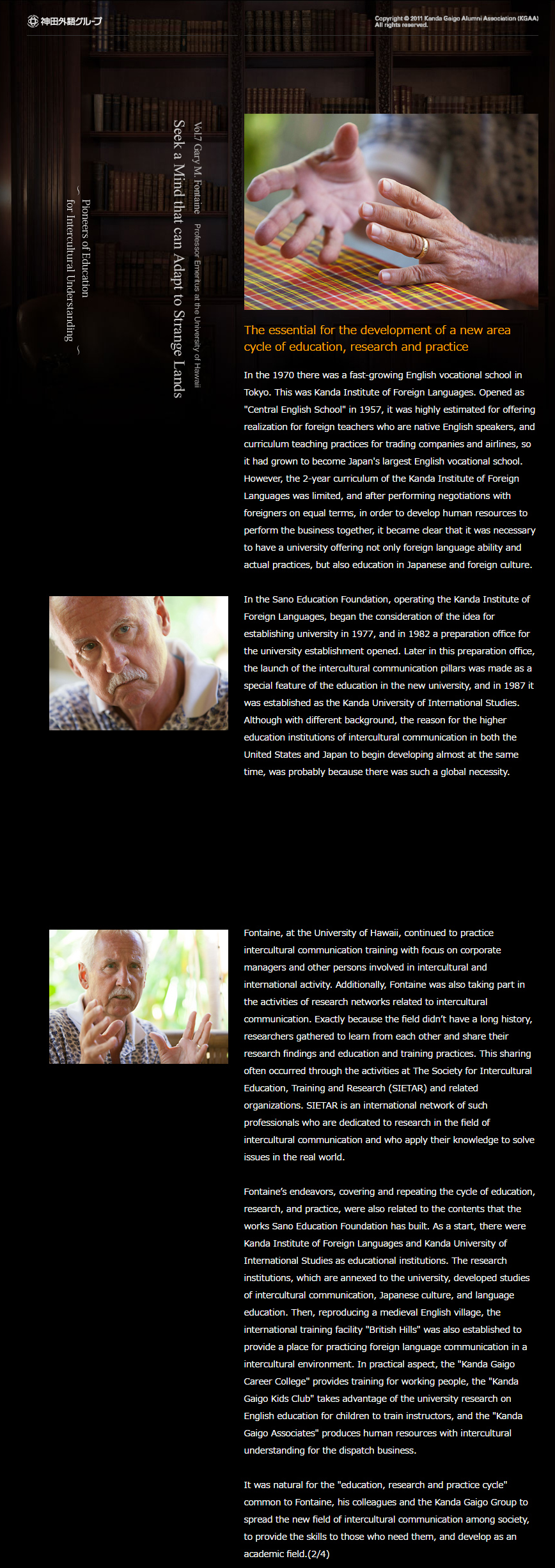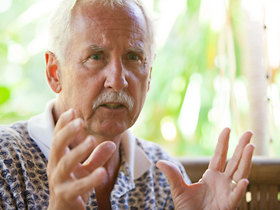

Copyright © 2011 Kanda Gaigo Alumni Association(KGAA). All rights reserved.

In the 1970 there was a fast-growing English vocational school in Tokyo. This was Kanda Institute of Foreign Languages. Opened as "Central English School" in 1957, it was highly estimated for offering realization for foreign teachers who are native English speakers, and curriculum teaching practices for trading companies and airlines, so it had grown to become Japan's largest English vocational school. However, the 2-year curriculum of the Kanda Institute of Foreign Languages was limited, and after performing negotiations with foreigners on equal terms, in order to develop human resources to perform the business together, it became clear that it was necessary to have a university offering not only foreign language ability and actual practices, but also education in Japanese and foreign culture.

In the Sano Education Foundation, operating the Kanda Institute of Foreign Languages, began the consideration of the idea for establishing university in 1977, and in 1982 a preparation office for the university establishment opened. Later in this preparation office, the launch of the intercultural communication pillars was made as a special feature of the education in the new university, and in 1987 it was established as the Kanda University of International Studies. Although with different background, the reason for the higher education institutions of intercultural communication in both the United States and Japan to begin developing almost at the same time, was probably because there was such a global necessity.

Fontaine, at the University of Hawaii, continued to practice intercultural communication training with focus on corporate managers and other persons involved in intercultural and international activity. Additionally, Fontaine was also taking part in the activities of research networks related to intercultural communication. Exactly because the field didn’t have a long history, researchers gathered to learn from each other and share their research findings and education and training practices. This sharing often occurred through the activities at The Society for Intercultural Education, Training and Research (SIETAR) and related organizations. SIETAR is an international network of such professionals who are dedicated to research in the field of intercultural communication and who apply their knowledge to solve issues in the real world.
Fontaine’s endeavors, covering and repeating the cycle of education, research, and practice, were also related to the contents that the works Sano Education Foundation has built. As a start, there were Kanda Institute of Foreign Languages and Kanda University of International Studies as educational institutions. The research institutions, which are annexed to the university, developed studies of intercultural communication, Japanese culture, and language education. Then, reproducing a medieval English village, the international training facility "British Hills" was also established to provide a place for practicing foreign language communication in a intercultural environment. In practical aspect, the "Kanda Gaigo Career College" provides training for working people, the "Kanda Gaigo Kids Club" takes advantage of the university research on English education for children to train instructors, and the "Kanda Gaigo Associates" produces human resources with intercultural understanding for the dispatch business.
It was natural for the "education, research and practice cycle" common to Fontaine, his colleagues and the Kanda Gaigo Group to spread the new field of intercultural communication among society, to provide the skills to those who need them, and develop as an academic field.(2/4)